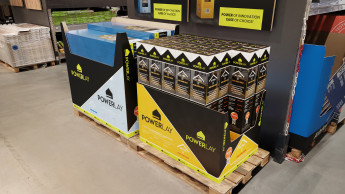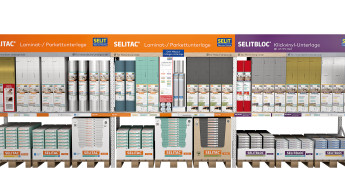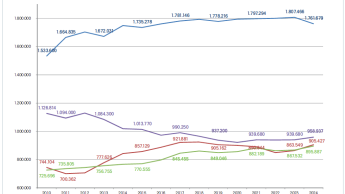
deep insights, facts & figures
24.06.2009
Ceramic floors are the most popular type of flooring in European homes, followed by wooden floors and laminate. Five out of ten people want to change flooring in their homes in the next five years. When buying parquet, consumers prefer a specialist dealer to a DIY store
Most important when deciding on a new floor is information about maintenance, and floor samples as well. People associate a wooden floor with ‘natural’ living and a ‘warm feeling’ in line with the ecological and authenticity trend, and consider it a good investment in the long run. These are conclusions from the European Consumer Survey on Parquet, conducted by InSites Consulting in eight European countries and commissioned by the FEP (European Federation of the Parquet Industry). Ceramic floors most popular Ceramic flooring is the most popular type of floor in Europe, installed in 89 per cent of houses or apartments there. Runner-up is the wooden floor (43 per cent), followed by laminate (34 per cent). Carpet (27 per cent) and vinyl (19 per cent) are the least popular. The popularity of wooden floors differs from country to country. Top of the league is Sweden, where you can find wooden floors in 80 per cent of homes. Also Poland (67 per cent) and Austria (65 per cent) show a preference for wooden floors. Spanish houses or apartments have the fewest wooden floors (16 per cent). 50 per cent want to change flooring in their homes 50 per cent of people who own or rent a house or apartment are considering changes to the flooring in the next five years, especially in the living-room, bedroom or kitchen. If people can choose which parquet they want to install, the majority (60 per cent) choose floating parquet. They prefer buying parquet at a specialist dealer (45 per cent) rather than a DIY store (39 per cent). However, currently installed floors were most often purchased in DIY stores after consultation in professional stores. “People tend to visit professional stores first and use them as a source of information throughout their decision-making process, but often purchase the actual flooring material in a DIY store,” explains Christophe Vergult, managing partner of InSites Consulting. A store visit has most impact on the actual decision process. Information on maintenance and cleaning of the floor is crucial, as well as floor samples. Other factors that are a lot less significant, but still important when making decisions on which floor to buy are the opinion of others (39 per cent) and own previous experience (38 per cent). Wooden flooring seen as a good investment in the long run “Looking at trends, we see that people care a lot about the decoration of the house or apartment they live in. When decorating, people prefer real products over imitations, even if they cost more. This doesn’t mean that budget is not an issue. People believe that the economic crisis has a strong impact on their spending, and the crisis will also have a strong impact on future spending. But they consider a wooden floor to be a good investment in the long run,” says Christophe Vergult. A lot of people are ‘cocooning’, or spending more time at home in an average week compared to five years ago. A wooden floor is associated with a ‘warm feeling’. This is less the case with laminate, ceramic tiling or natural stone, vinyl, concrete or carpet. People also find that building in an eco-responsible way is important, and they live their lives as ecologically as possible. Wooden floors are associated with nature, authenticity and durability. Parquet is least associated with chemical products. These data result from a market survey conducted by InSites Consulting that was commissioned by the FEP in May 2009. The European Consumer Survey on Parquet provides an overview of the market structure and potential, the knowledge and perception of different floors, as well as the buying process, purchasing reasons and expectations. In total, 8 194 consumers took part in this online survey in eight countries: the Netherlands, France, Spain, Sweden, Germany, Poland, Austria and Italy. The figures are representative for each country and for Europe, according to age (25 to 70) and gender.
Related articles
Read also

 Menü
Menü















